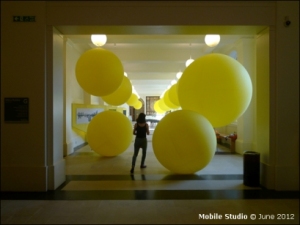This article is published on the UCL Art Museum blog
 One Day in the City Festival taking place on Friday 13th June brings together a celebration of literature, art, music and culture in London. The framework is broad. Nick Shepley, the founder and organiser of the festival, and Teaching Fellow in English Literature at UCL, acknowledges this and says he has not tried to narrow it down to specific themes: “It is about opening out and trying to bring people to something that is a simple celebration of the city, its literature and art, and its cultural richness.”These are areas people work on everyday across various departments at UCL with their own audiences. Nick wants to harness this, and “break down the potential separation of audiences with the One Day festival, encouraging a wider demographic to come along.”
One Day in the City Festival taking place on Friday 13th June brings together a celebration of literature, art, music and culture in London. The framework is broad. Nick Shepley, the founder and organiser of the festival, and Teaching Fellow in English Literature at UCL, acknowledges this and says he has not tried to narrow it down to specific themes: “It is about opening out and trying to bring people to something that is a simple celebration of the city, its literature and art, and its cultural richness.”These are areas people work on everyday across various departments at UCL with their own audiences. Nick wants to harness this, and “break down the potential separation of audiences with the One Day festival, encouraging a wider demographic to come along.”
The festival’s centre will be in the UCL South Cloisters, decorated with a fun and artistic skyline created through lighting and architectural constructions. There will also be a multitude of balloons lining the Cloisters and leading the way to various events. These events will include a debate about taboo language with India Knight (journalist and author), Will Self (novelist) and Tim Clare (poet), a Caribbean carnival and seminars on topics related to creativity in London. In the UCL Art Museum there will be a talk by one of the Slade students, Helena Hunter, a poetry workshop and live performances as well as Slade students distributing prints of their work. For a full list, see the One Day website here. Continue reading
